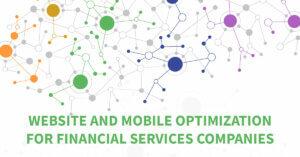Taking Experiential Retail Online
By Kate Orchard
February 6, 2020
Share
The term “experiential retail” popped up a lot last year, talking about trends in brick-and-mortar storefronts. Retail Dive gives a good overview, which is a good place to start. The idea really addresses creating an environment you can’t replicate online. But now, as we’re practicing social distancing and most businesses have had to move exclusively online, what does experiential retail mean and how can we apply it to online businesses? While the concept of experiential retail originated for offline environments, the principal can also apply to digital experiences. Healthcare, education, financial services, insurance, and more, can all benefit from an experiential approach. Many brick and mortar businesses have had to move online this spring, but there are ways to take that in-person experience and bring it online.
Building a Digital Experience
The driving idea behind experiential retail is that in a landscape where there are so many options for consumers, your brand differentiator isn’t just your product or service offering, it’s the shopping and buying experience that you can provide customers. For brick and mortar shops, this may look like anything from offering classes and demonstrations, to incorporating art exhibits, food and drinks, or even amusement park rides into the store environment. For digital businesses, there are many options to bring these features online.
We’re starting to see some great examples. L’Oreal’s websites, for example feature a “virtual try on,” where a user can upload a photo of themselves and apply different shades of lipstick or foundation to determine match. Other brands like Nike and Tesco use a club or membership model, where in addition to getting the product or service you purchase, you also get access to community features like forums, online classes, games, and more. Other brands are live streaming classes and services. Many service providers offer personalized diagnostic quizzes to recommend the best product match for each customer. All of these efforts emphasize the experience of research and interacting with the brand — not just the product.
Achieve an Experiential User Journey
So how do you take your website or mobile app from a well-oiled machine meant to highlight your products to an equally well-oiled machine that creates a unique experience? Unsurprisingly, the answer starts with measuring your existing data and A/B testing new experiences. The tricky thing is that while conversions like add to carts, registrations, and purchases will always be important, new metrics also come into play.
If your goal is to create an experience-first site, some new metrics to consider might include scroll depth, video views, subscriptions, return visits, time on site, referral source, and more metrics that might be extraneous to your end goal. These will give you a sense of how people interact with your content. Do they just quickly find what they need and leave? Are they searching but not purchasing? This information will tell you what kind of experience you already have.
You also will have the task of creating and balancing an awesome experience on the site while still keeping purchases, registrations, or other conversions high, with the goal of securing brand loyalty and improving your bottom line. That’s why A/B testing is important, and why digital properties are such a great place to experiment with different experiences. You can A/B test a new concept, measure its success, and then either implement, iterate, or move on depending on the results.
To learn more about SiteSpect, visit our website.
Share
Suggested Posts
Subscribe to our blog:





